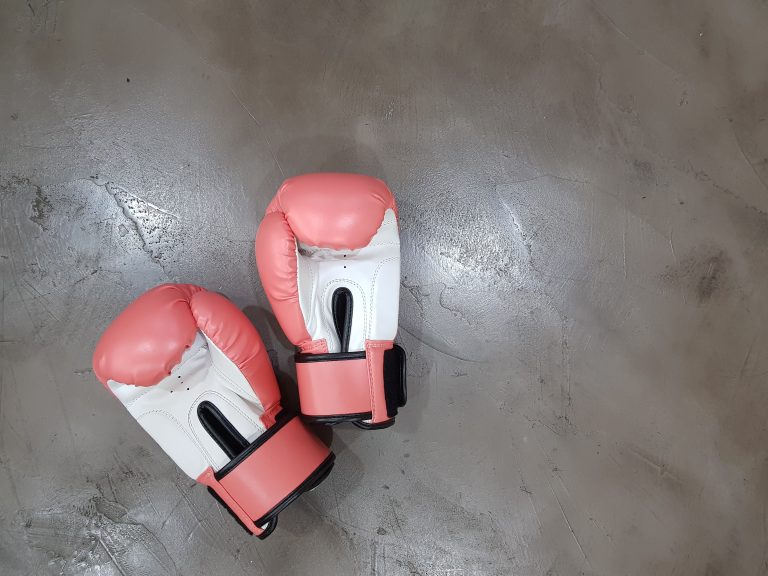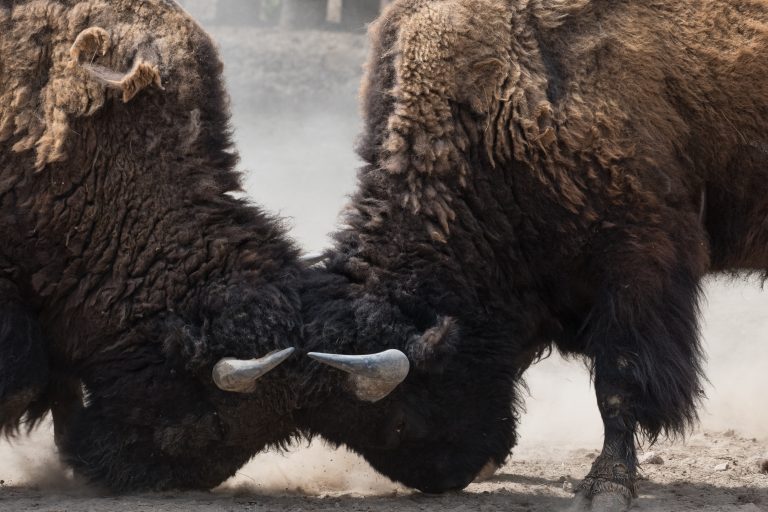What Is More Popular: Karate or Taekwondo?
Martial arts have been around for centuries and have evolved into different styles and forms. Two of the most popular martial arts forms are Karate and Taekwondo. Both have their roots in Asia and share many similarities, but they also have distinct differences. One of the most common questions among beginners is which martial art form is more popular. In this blog post, we will look at both martial art forms, their history, differences, and popularity to help you make an informed decision.
What is Karate?
Karate is a form of unarmed combat developed in Okinawa, Japan, in the 19th century. Karate focuses on striking, punching, kicking, knee strikes, and other techniques to defend oneself from attackers. It requires discipline, agility, and focus to master, and martial artists who practice karate are expected to maintain high fitness levels and health.
Karate has been practiced around the world, and there are various forms of Karate, including Shotokan, Goju Ryu, Wado Ryu, and Shito Ryu. Each form has its unique techniques, styles, and approaches to martial art.
What is Taekwondo?
Taekwondo is a Korean martial art form that has become popular worldwide. Taekwondo emphasizes high kicks, jumping, spinning kicks, open-handed strikes, and other techniques in competition and self-defense. The sport uses hands and feet equally, and training involves both physical and mental strength.
Taekwondo has become popular due to its inclusion as an Olympic sport, and it has over 70 million practitioners worldwide. It is also known for its acrobatic jumps and high-flying kicks and is a popular martial art form for children and adults alike.
Differences between Karate and Taekwondo
While both Karate and Taekwondo have similarities, they also have some key differences. Some of the differences between Karate and Taekwondo include:
1. Techniques
Karate techniques involve open-handed strikes, blocks, and punches, while Taekwondo focuses on high jumps and kicks. Karate techniques are more linear and powerful, whereas Taekwondo techniques are more circular and fluid.
2. Training
Training for Karate focuses on hitting as hard as possible, and the practitioners train with actual sparring. In contrast, Taekwondo training emphasizes speed, agility, and flexibility rather than strength.
3. Philosophy
Karate philosophy emphasizes self-defense and physical combat, but Taekwondo emphasizes sporting competition and personal development. Taekwondo also emphasizes discipline and self-control in daily life and work to build character.
Popularity of Karate and Taekwondo
Both Karate and Taekwondo have gained popularity all over the world, with millions of students and practitioners around the globe. In terms of global popularity, Taekwondo is more popular than Karate. This is due to two primary reasons:
1. Olympic recognition
Taekwondo was first introduced as a demonstration sport at the 1988 Seoul Olympics and became an official Olympic sport in 2000. Since then, it has been included in every Olympic event, which has helped increase its popularity worldwide.
2. Promotion of Taekwondo as a sport
While Karate is also a popular sport, the focus of Karate has been on self-defense and personal growth. In contrast, Taekwondo has always been promoted as a sport, with international federations having different tournaments worldwide. This has helped increase its popularity and attract more students and practitioners.
The Most Frequently Asked Questions About Karate and Taekwondo
Karate and Taekwondo are two of the most popular martial arts in the world. Both are grounded in centuries of tradition and offer a wide range of physical and mental benefits for practitioners of all levels. However, many people are still unsure about the differences between these two forms and wonder which one is more popular. In this blog post, we will answer some of the most frequently asked questions about Karate and Taekwondo to give you a better understanding of the two martial arts and help you decide which one is right for you.
1. What is Karate?
Karate is a Japanese martial art that emphasizes striking techniques, such as punches, kicks, and knee strikes. It is a self-defense system that relies on a combination of physical strength, speed, and coordination. Karate also focuses on mental discipline, which helps practitioners to develop self-control, patience, and self-confidence. One of the most important aspects of Karate is its kata, a series of prearranged movements that simulate a fight against multiple opponents. Karate places a strong emphasis on respect, both for oneself and others.
2. What is Taekwondo?
Taekwondo is a Korean martial art that emphasizes dynamic and powerful kicking techniques, often referred to as „flying kicks.“ It is a popular Olympic sport that has gained recognition for its acrobatics and athleticism. Taekwondo also focuses on mental discipline and emphasizes the importance of self-control, perseverance, and respect. In addition to its kicking techniques, Taekwondo also includes hand strikes, throws, and joint locks.
3. Which is more popular, Karate or Taekwondo?
The popularity of Karate and Taekwondo varies depending on the region and country. In the United States, Taekwondo is generally more popular than Karate, while in Japan, Karate is more widely practiced. However, both martial arts have a significant following and are practiced by millions of people worldwide.
4. Which martial art is better for self-defense?
Both Karate and Taekwondo are effective martial arts for self-defense. Karate’s emphasis on structured movements and close-range techniques make it a good choice for defending oneself in a confined space, such as a hallway or small room. Taekwondo’s emphasis on long-range kicks and flashy techniques can be useful in a self-defense situation where distance is key. However, it’s important to note that self-defense is not just about physical technique but also situational awareness, mental preparation, and quick decision-making.
5. Which martial art is better for competition?
Both Karate and Taekwondo have their own unique forms of competition. Karate competitions typically involve kata and sparring, while Taekwondo competitions involve sparring and poomsae, a set of choreographed movements. In terms of Olympic competition, Taekwondo is the clear winner, as it has been an Olympic sport since the 2000 Sydney Games. Karate is set to make its Olympic debut at the 2021 Tokyo Games.
6. Which martial art is easier to learn?
Both Karate and Taekwondo require time, patience, and dedication to master. However, some people find Taekwondo easier to learn because of its emphasis on dynamic kicking techniques, which can be more natural for some people than Karate’s structured movements. Ultimately, the ease of learning a martial art depends on the individual practitioner’s experience and learning style.
7. Can Karate and Taekwondo be practiced together?
Absolutely! In fact, many martial arts schools offer classes that combine elements of Karate and Taekwondo, as well as other martial arts styles. Combining these two martial arts styles can help practitioners to develop a more well-rounded set of skills and techniques.
How to Choose Between Karate and Taekwondo
If you’re interested in martial arts and wondering which style to learn, you may be struggling to choose between karate and taekwondo. Both disciplines are popular and widely practiced, but they have distinct differences in terms of techniques, philosophy, and cultural background. In this guide, we’ll explore how to make an informed decision and find the right fit for you.
Step 1: Understand the Origins and Philosophy of Karate and Taekwondo
To make an informed decision, it’s important to know the history, culture, and values behind each style. Karate originated in Japan and emphasizes powerful strikes, blocks, and kicks, often performed in straight-line movements. Karate also promotes values such as discipline, focus, respect, and humility, and views martial arts as a way of self-improvement and spiritual growth.
On the other hand, taekwondo originated in Korea and focuses on fast, dynamic kicks, often performed in circular or spinning movements. Taekwondo also puts a strong emphasis on Olympic-style sport sparring, where competitors score points by landing kicks and punches on each other. Taekwondo also promotes values such as perseverance, indomitable spirit, and self-defense, and views martial arts as a way of physical fitness and self-protection.
Consider what aligns with your personal values and goals, and whether you prefer a more traditional or modern approach to martial arts.
Step 2: Research the Teaching Methods and Curriculum of Each Style
While karate and taekwondo share some common techniques and principles, there are differences in their teaching methods and curriculum. Karate classes often follow a structured, hierarchical system of belts or ranks, where students learn and perfect a set of forms or kata that simulate combat scenarios. Karate classes also involve partner drills, sparring, and self-defense techniques.
In contrast, taekwondo classes often take a more flexible, individualized approach, where students can work on their own pace and tailor their training to their specific goals. Taekwondo classes may involve a variety of training methods, such as forms, sparring, board breaking, and self-defense drills. Taekwondo also tends to have a more sport-oriented approach, with tournaments and competitions being an important aspect of the training.
Consider which teaching style and curriculum would suit you better, and whether you prefer a more structured or free-form approach to your training.
Step 3: Evaluate the Physical Demands and Training Environment
Both karate and taekwondo require physical fitness, flexibility, and coordination, but they may have different training environments and intensities. Karate classes may be more focused on developing strength and power, with repeated striking and blocking drills, and may involve limited or controlled sparring. Karate classes may also have a strong emphasis on tradition, etiquette, and formal bowing rituals.
In contrast, taekwondo classes may be more dynamic and aerobic, with fast-paced movements, jumping or spinning kicks, and full-contact sparring. Taekwondo classes may also have a more relaxed or casual atmosphere, with less emphasis on traditional customs and more focus on having fun and socializing.
Consider your physical abilities and limitations, and whether you prefer a more intense or relaxed training environment. Also, consider the availability and quality of the training facilities, the qualifications and experience of the instructors, and the costs and schedules of the classes.
Step 4: Try Out Free Trials or Class Observations
The best way to make a final decision is to try out some classes or observe them in action. Most martial arts schools offer free trials or introductory classes, where you can experience the training firsthand and meet the instructors and students. During the trial or observation, pay attention to the following factors:
– How well the instructor explains and teaches the techniques and concepts
– How well the students understand and perform the techniques and concepts
– How well the class fits your goals and expectations
– How well you feel welcomed and comfortable in the class and the community
Based on your experience, you can make an informed decision on which style and school to choose. Remember that the success and enjoyment of martial arts depend on your dedication, effort, and attitude, regardless of which style you choose.
Conclusion
In summary, choosing between karate and taekwondo involves considering the origins, philosophy, teaching methods, physical demands, and training environment of each style, as well as trying out some classes or observations. While both disciplines have their unique benefits and challenges, the most important factor is finding the right fit for your personality, goals, and lifestyle. By following these steps, you can make an informed and confident decision and start your martial arts journey.
Inhaltsverzeichnis






